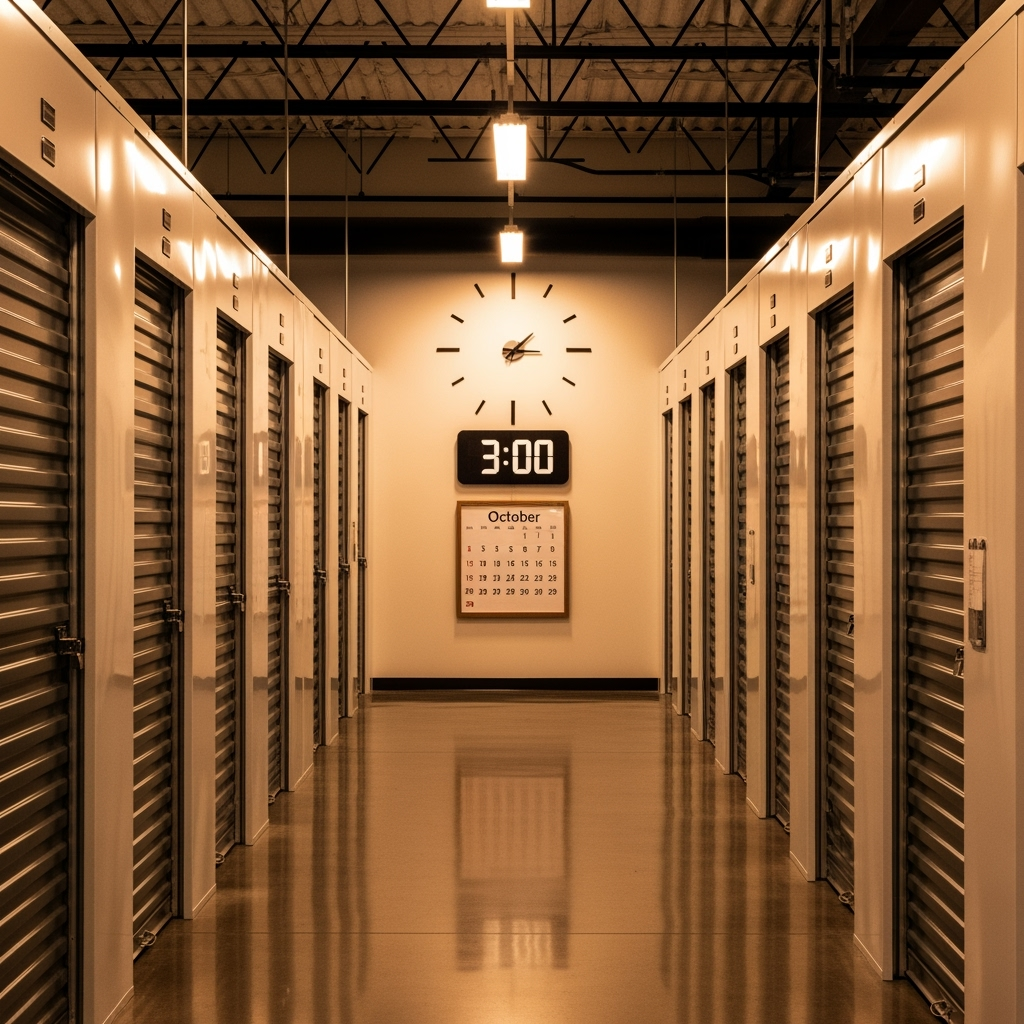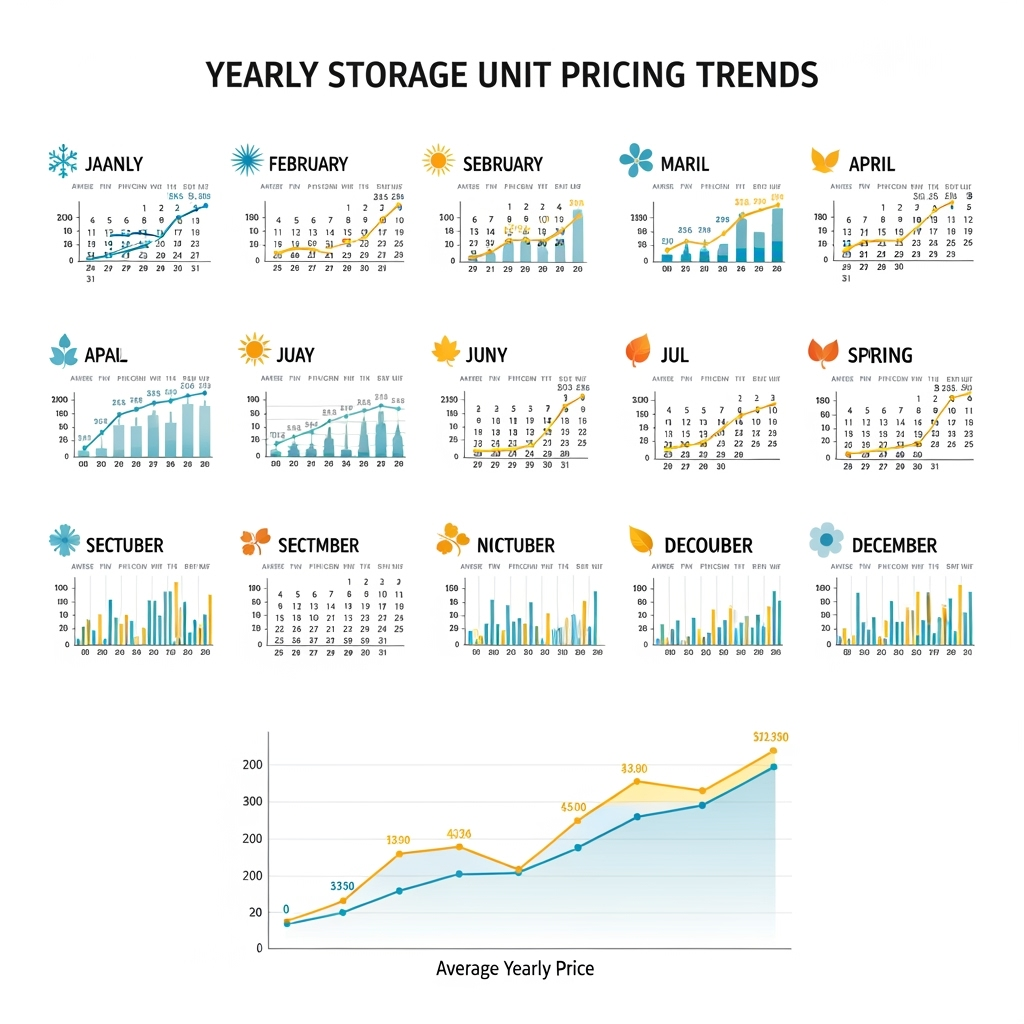Understanding Storage Unit Seasonal Pricing and Availability
Whether you’re planning a move, managing a business inventory, or just need extra space, timing your storage unit rental can significantly impact both availability and your budget. This comprehensive guide will help you navigate seasonal trends in the self-storage industry to secure the best possible rates and ensure unit availability when you need it most.

Peak vs. Off-Peak Seasons: What You Need to Know
The self-storage industry experiences predictable seasonal fluctuations that affect both pricing and availability. Understanding these patterns can help you make informed decisions about when to rent:
Peak Season (May-September)
- Highest demand and prices
- College students seeking summer storage
- Families coordinating moves during school breaks
- Housing market activity increases
Off-Peak Season (October-April)
- Lower demand and better rates
- More unit options available
- Greater negotiating flexibility
- Ideal for long-term storage planning

Strategic Timing Tips for Different Storage Needs
Residential Moving Storage
Plan your storage rental 3-4 weeks before peak moving seasons (summer months) to secure better rates and ensure availability. Consider booking in early spring or late fall for the best combination of moderate weather and lower prices.
Business Storage
For seasonal inventory, book storage units one season ahead. January and February typically offer competitive rates for long-term business storage needs.
Student Storage
Book at least one month before semester ends. Consider extending through summer if fall semester rates are predicted to rise significantly.
Money-Saving Booking Strategies
Time Your Reservation Right
- Book mid-month when move-ins/move-outs are lower
- Reserve units during weekdays rather than weekends
- Look for end-of-month specials as facilities try to meet quotas
Long-Term Planning Benefits
Consider locking in rates during off-peak seasons, even if you won’t need the unit immediately. Many facilities offer better long-term rates when you book during slower periods.
Weather Considerations by Season
Summer Storage (June-August)
- Highest demand for climate-controlled units
- Book early for temperature-sensitive items
- Premium pricing for climate control
Winter Storage (December-February)
- Lower demand for climate control
- Better availability for all unit types
- Potential weather challenges during move-in
Making the Right Choice: Additional Factors to Consider
Location Strategy
Consider facilities slightly outside prime areas or city centers. These locations often offer better rates and more availability, even during peak seasons.
Size Selection Timing
Larger units (10×20 and up) tend to have more stable pricing throughout the year. If you need a common size like 5×10 or 10×10, booking during off-peak seasons becomes more critical.
Special Considerations for Climate-Controlled Units
Climate-controlled units typically see less seasonal price fluctuation but higher overall demand. Consider these timing strategies:
- Book climate-controlled units 2-3 months before extreme weather seasons
- Lock in rates during moderate weather months
- Consider longer lease terms for more stable pricing
Planning Your Storage Rental Timeline
Ideal Booking Windows
- Peak Season Rentals: Book 4-6 weeks in advance
- Off-Peak Season Rentals: Book 2-3 weeks in advance
- Long-Term Storage: Book during winter months
- Short-Term Storage: Book mid-month during off-peak seasons
Conclusion: Making Your Decision
While the best time to rent a storage unit depends on your specific needs, understanding seasonal trends can help you make a cost-effective decision. Generally, booking during off-peak seasons (October-April) offers the best combination of availability and pricing. However, don’t sacrifice convenience or needed features just to save on costs – consider all factors, including climate control needs, location convenience, and your timeline when making your final decision.










Leave a Reply